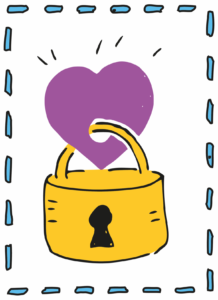Safe space
What is a Safe Space?
A Safe Space is a place young people can go to when they need some extra support, to meet with a trusted adult or access peer support which is safe and comfortable.
What it is:
✓ A room for young people to take a short time out so that they can reintegrate back into lessons once calm
✓ If a young person is feeling stressed or overwhelmed, they can go there to be mindful
✓ A place where young people can feel safe
✓ A place where young people can access information on wellbeing strategies
✓ A place where young people can be signposted to appropriate services
✓ A place where young people can have access to peer mentors
What it isn’t:
X It is not an area for young people to be isolated
X It is not intended to be a space for disciplinary time out.
X A sick bay
A Safe Space is an ideal place for conversations and support to happen.
Location
Safe Spaces must be accessible to all, and in a place that young people go to or pass by. It needs to be somewhere they feel comfortable going and not somewhere they may view negatively.
Some Safe Spaces in primary schools have been in playgrounds, as they recognise that free time can potentially have more friendship difficulties and conflict so young people need somewhere to go where they feel supported.
Environment
Some things to consider to help make the Space feel more comfortable are; soft furnishings, lighting, mood lamps, use of colours and sensory activities.
It would be beneficial to include information leaflets available which signpost and inform, such as local wellbeing services, Kooth online support and mentoring; as there could be young people who are not ready to talk or ask for help, so they may see something that encourages or gives them the confidence to ask.
Consider positive messages or posters which signpost or give information about services to reassure that they are not alone. Resources which offer distraction techniques or coping strategies could be used e.g. puzzles, drawing, colouring, mindfulness etc.
Surveying Students’ needs
Gathering information to work out what your safe space should look like:
We recommend putting together a simple survey to ascertain what young people feel will benefit them in their safe space.
First – what area do you have? Is it a room available, or do you require it to be portable? Either is fine.
Example Survey Questions
• What makes you feel safe?
• Where do you feel safe in your school/hub?
• What things would you have in your safe space?
• What would your safe space be called?
Example Survey Results
A school in Folkestone were surveyed in a very simple way. They were asked to write on a post-it note what they would have in their safe space at school. The most popular items were ‘friends and people to talk to, trust’ with 31 people individually writing this, and beanbags with 24 people opting for this. This was a useful and simple exercise which gave an idea of what colours the space may be, what young people would like to see and what they would want the environment to be like.
Safe Spaces are most effective when they are co-produced. Young people should be involved in the identification of needs, preparation, design, set-up and evaluation of the safe space.
Safe space flyer and poster
-
Safe Space Poster
.docx
1 MB
Download resource -
HSK Safe Spaces Flyer
.pdf
311.61 KB
Download resource
